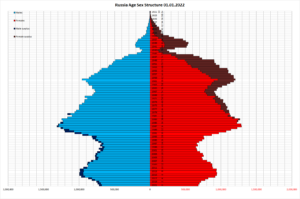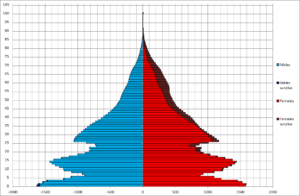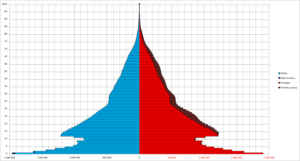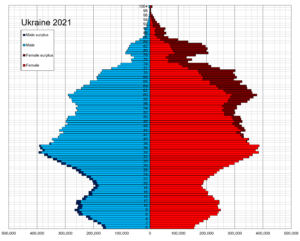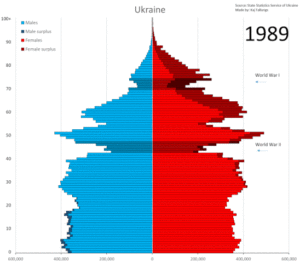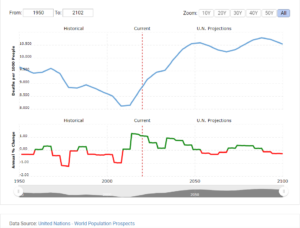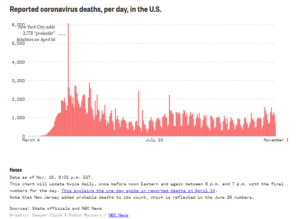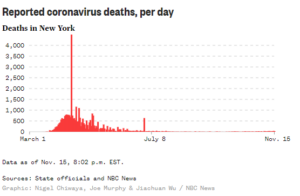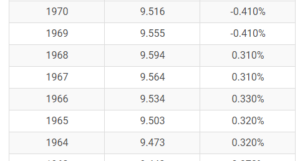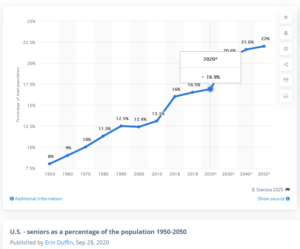Debates about gun laws are largely a waste of time because everyone pretends they are about facts when really they are about values. Having said that, there are many common errors repeated by both sides on a gun debate that trigger my “somebody on internet is wrong reflex.” One of the most common set of errors relates to comparing differing countries or states without accounting for some basic demographic facts that mean the comparison that on the surface seems compelling is actually misleading or at least not as straight forward as it seems. Since this set of errors also impacts other less emotionally driven arguments, I will indulge myself and point out some of these common errors.
Error Number #1: Failure to account for age structures of the countries or states that are being compared.
Brazil has a murder rate of 20.9 people per 100,000. That is pretty high but it is still lower than 18 other countries such as Venezuela (36.7) or South Africa (33. 5). Compare to Brazil, the USA’s murder rate of 6.3 per 100,000 does not look so bad. But USA rate is worse than any European country except Russia at 7.3 (Ukraine’s murder rate was basically the same as the US before the war started). On the other hand, Switzerland and China (if you believe their statistics) come in at .5 per 100,000. That is so much lower then the US rate as to make them seem almost murder free by comparison. But if we focus on Switzerland and Brazil for a bit, we can see why a countries murder rate is impacted by a lot more then just guns.
Brazil has far tougher gun laws then the US but it has a far more murders then the US. Switzerland has some of the most liberal gun laws in the world (stricter then some parts of the US but you can own rifles in Switzerland that would be illegal in New York or California) and they have one of the lowest murder rates in the world.
If you read gun debates, you will see endless attempts to score points off of figures like this. Pro-gun people will bring up Switzerland so often you would think it was a utopia and anti-gun people will pound home the fact that US murder rates are far above any other “First World” country as proof that its gun laws are to blame.
In all that sound and fury, you will rarely see discussed the other factors besides guns that go into influencing the murder rate. One of the simplest of these factors is age. Young males under thirty commit the vast majority of violent crimes. So all things being equal, we should expect the country with younger population to have more crime. Brazil’s average age is 33.5. The US average age is 38.6 years. In Switzerland the average age is 43.1 years. In the EU as a whole, the average age is 43.9 years. Those average age differences might not seem like a lot, but when your average age is 33.5 you have a lot bigger part of your percentage of your population in the prime crime committing ages.
For example, 62% of Brazil population is 29 or under (and those is prime crime committing ages). By contrast, Switzerland only has about 30% of its population under 30 (I only found figures for Switzerland from 2014 and at that time they were 34% but the Swiss population on average has gotten older since then so I rounded down to 30%). So Brazil has more than twice the percentage of people in the prime crime committing demographic then Switzerland does even though Switzerland’s average age is only 10 years greater then Brazil’s. So even if all other things were equal, you would expect Brazil’s murder rate to be twice as high as Switzerland’s due to demographic reasons alone (for this statement to be even roughly true, the under 30 crowd has to be more then 10 times as likely to commit murder then the over 30 crowd. I believe this to be the case but can’t find a source that breaks it down nice and neat and I am too tired to do all the math to collate the various sources to check my figure).
Granted, Brazil has way more than twice the Swiss murder rate so obviously there is more going on in Brazil then just a younger population. But the point is that anyone (Pro or anti gun) that you see comparing crime rates between countries without accounting for the differing age structure between countries is making bogus use of statistics.
Error Number #2: Failure to account for economic inequality.
The age gap is only one of the things that you need to account for when considering crime statistics. Another thing you should look at is the level of economic inequality. All other things being equal, a country with higher levels of economic inequality has a much higher crime rate then countries are more equal.
The reason for this correlation can be debated endlessly and I will not get into that debate here. The only thing I will note is that countries with high inequality also tend to have high rates of single motherhood, drug use, and other social issues associated with crime. They also tend to be far more diverse and there is evidence that suggests that people are more willing to commit violent crime on people perceived to be part of the “other” group.
Regardless of the reasons, the fact remains that high inequality corresponds to higher crime so strongly that I am not aware of anyone (left, right, center) who doubts that the two things go together. The main problem is that measuring inequality precisely is a lot harder and more subject to dispute then talking about the age structure of a country. Comparing Switzerland to Brazil both shows how inequality tracks with crime and how those measure can be murky.
The most common way of measuring economic inequality is via the Gini index. A Gini index of 0 represents perfect equality, while an index of 100 implies perfect inequality. Using that measure, Brazil had a index of over 53 in 2019 and Switzerland had an index of just over 30 in the same year. So if you go by the index, Brazil is almost twice as unequal as Switzerland. Now you can question how accurate those figures are. For example, do those figures accurately capture the much larger grey/black economy in Brazil then in Switzerland? On the other hand, is the Swiss figure overstated (in the practical sense that matters to us) due to the large number of wealthy people who visit/keep a lot of money in Switzerland?
But regardless of such questions, everyone familiar with both countries would agree that Switzerland is a lot more equal then Brazil is. And for that reason, making arguments about gun laws by comparing Switzerland to Brazil without taking that inequality into account is silly. In the case of this particular example, the only one who would do it would be pro-gun people since Switzerland has vastly more permissive gun laws then Brazil does. But it is just as silly when the anti-gun people try to make comparisons between countries without taking this into account.
For example, in 2019, the US had a GINI index of 41.5. Japan had an GINI index of 29.9 and a much older population. But anti-gun groups will compare the two countries murder rates all the time without even attempting to take those two things into account. More commonly, the US is compared to Europe where the average EU Gini index was 30.2 (and also with a much older population then the US). The fact that nobody should expect Brazil to be like Switzerland regardless of what you think the ideal gun laws are is obvious to all the anti-gun types. But somehow they expect that US can become like the EU even though by all measures there is the same type of difference between US and EU (albeit not as extreme) as there is between Switzerland and Brazil.
The Bottom Line: The US is more like a Latin America country then it is a European one.
All the chattering classes of either side of any political debate in the US tend to start from the presumption that we naturally should be compared to European countries. I think that this is in larger part because most of the chattering class in this country is overwhelming white. But the country as a whole is not.
In fact, if you look at most demographic measures (Age structure, ethnic makeup, economic equality, crime rates, church attendance and other measures of religiosity, and so on and so forth) the US is more like Latin America then it is Europe. The only leg people have to stand on in terms of thinking that the US should be compared to Europe is in income per head. But there is no good evidence that income per head has anything to do with the murder rate regardless of gun laws. There are really poor countries that have a much lower murder rate then countries that are much wealthier countries. (Nepal being one example of a country with a relatively low murder rate compare to much wealthier countries).
Ironically, there is one way in which most Latin American countries are more like Europe then the US. And that is regards to gun laws. It is harder in most Latin American countries to legally own a gun than it is in many European countries like Finland or Switzerland to name just a couple. But that does not stop Latin America from being even worse on average then the US when it comes to the murder rate.
In my personal opinion, if the US had European style gun laws, we would have the same situation as most Latin American countries. In other words, we would still have high rates of murder but only the privileged and the criminals would have guns. But that is impossible to prove in this life and even if you could, it would not make any difference.
The blunt fact is that the gun debate will always ultimately boil down to values. In particular, how much you trust the government and how much you value personal freedom? If you pay attention, you will notice that in general, people’s opinions regarding what they are willing for the Government to do to protect them to from Covid also track what they are willing to have the government to do to protect them from guns. Just like with guns, people argue back and forth about the how “effective” various Covid measures are. But if you really dug down, the real difference is not around fact, but around what people value more, their safety or their freedom.
And that is not a trade off you are going to resolve with facts and figures.

